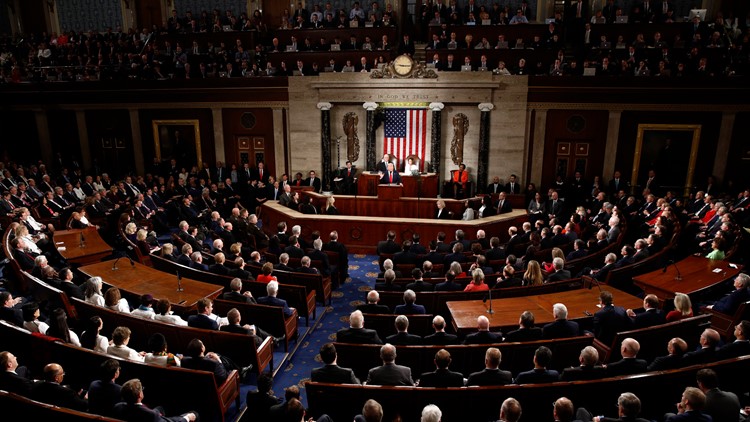On Jan. 20, 2021, either President Donald Trump or former Vice President Joe Biden will take the oath of office. It is unclear if the country will have a Congress that is Republican-controlled, Democrat-controlled, or split like it is now. Here's a look a how that could all play out, and what it means for the future of the United States.
With less than four months until the election, various forecasts tracking all 435 House races strongly indicate that the Democrats will keep control. But, in the Senate, it could go either way with 35 seats up for grabs, 23 of which are currently held by Republicans.
Here's a look at what needs to happen for either party to maintain or wrestle away control from the other.
House of Representatives
Each House seat is up for election every two years. Assuming there are no vacancies and no members from a third party, then Democrats or Republicans need a minimum of 218 seats to ensure control of the House of Representatives.
Democrats currently hold 232 seats. Republicans have 198.
One seat is held by Justin Amash of Michigan. He's a former Republican who called for Trump's impeachment after the results of former Special Counsel Robert Mueller's probe into Russian interference in the 2016 presidential election came out. Amash later left the party in 2019 to become a Libertarian, but is not running in 2020.
Four other seats are vacant. Three were held by Republicans and one by the later Rep. John Lewis.
For Democrats to ensure they keep control, they must have a net loss of no more than 15 seats. Regardless of whatever else happens then, Democrats would hold a minimum of 218 seats.
For Republicans, the math is slightly more complicated. Assuming they can win back Amash's seat in Michigan (he announced July 17 he is not running) and fill the four vacancies, that would give them 202 seats. They would still need an additional net gain of 16 seats to reach 218 to win the majority.
There are plenty of other scenarios to determine who gets the majority, but that is the simplest one.
Senate
Terms in the U.S. Senate are six years long. Every two years, approximately one-third of the 100 seats are voted on. In 2020, it's 35 seats.
Republicans hold a 53-seat majority in the Senate. Democrats have 45. There are two independents -- Sen. Bernie Sanders of Vermont and Sen. Angus King of Maine. They caucus with the Democrats. In short, consider the Democrats to have 47 seats.
For Republicans to hold onto the Senate majority, they need a net loss of no more than two seats. For Democrats to win control, they need a net gain of four seats.
If it ends up in a 50-50 split, the tie goes to the party that also wins the White House. Under the Constitution, the vice president serves as president of the Senate. With that comes the right of being the tie-breaking vote on certain measures, such as federal judicial appointments, that don't require a super majority to pass.
This will be key if a seat opens up on the Supreme Court in the next four years. Justice Ruth Bader Ginsburg will be a couple of months shy of her 88th birthday on inauguration day and would be the third-oldest sitting justice in the court's history. It's a good bet she may step down during the next presidential term.
Justice Stephen Breyer will be 82 and could also be looking to retire in the not-too-distant future, whether in the upcoming presidential term or after 2024.
The next-oldest justice on the court is Clarence Thomas, 72.




